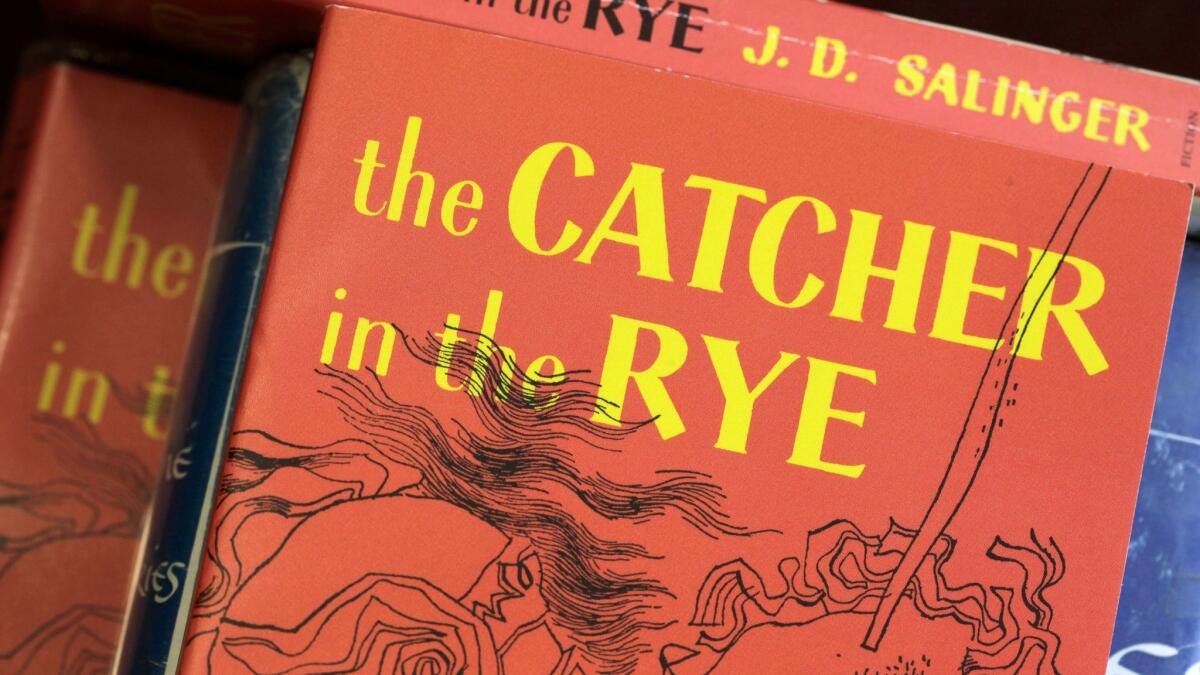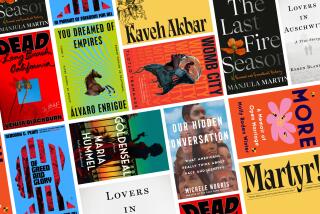Op-Ed: The gender pronoun test: What the ratio of ‘he’ to ‘she’ says about our favorite novels

- Share via
Writers are told to “write what you know,” so perhaps it would follow that men write more books about men than about women, and women write more books about women than about men.
To find out if that’s true, I scanned hundreds of novels and counted the appearances of two short words: “he” and “she.” By that standard, it seems my “write what you know” intuition was right, but that’s not all: The Pronoun Test in works of fiction reveals a stunning imbalance in representation. Like the Bechdel Test for films, it serves as a simple barometer of sexism.
Among other samples, I ran the test on a comprehensive list of the best English-language fiction of the 20th century maintained by the Stanford librarian Brian Kunde, which combines definitive lists by the Modern Library, Library Journal and others. The catalog of 221 titles includes consensus favorites such as “The Great Gatsby,” “1984” and “To Kill a Mockingbird.”
Of the top 50 classics written by women, 29 used “she” more than “he.” Of the top 50 classics written by men, 44 used “he” more than “she.” While women write female-centric books by a slight margin, in other words, men overwhelmingly write about male characters.
Apparently books by men do not need female characters to be considered great...while the opposite is almost never true for books by women.
Moreover, of the books written by women, not one of them is more than 80% “she.” But 20 of the top 50 classics by men are more than 80% “he.” Books such as “Heart of Darkness,” “For Whom the Bell Tolls” and “Lord of the Rings” focus on men at a rate that women writers never focus on women.
I ran the same test on the English-language novels that are most popular in American high school classrooms.
The AP English Literature course does not recommend a specific list of books, but between 2010 and 2016, there were 58 novels that appeared more than once on the end-of-year exam — a proxy for the titles that students are reading and thinking about the most. (Examples: “The Great Gatsby,” “The Kite Runner,” “The Catcher in the Rye” and “The Age of Innocence.”) Of these books, 30 were written by men and 22 were written by women.
Although books written by women came within one percentage point of a 1-1 ratio of “he” to “she,” books written by men favored “he” over “she” by more than 2 to 1.
The Common Core, a set of learning standards sponsored by the National Governors Assn. and the Council of Chief State School Officers, shows the same pattern. Of its “text exemplars,” or sample texts that provide a model reading comprehension level for a given grade, 24 of the books were written by men and only nine were written by women. The books written by women averaged 58% “she” and 42% “he,” the books written by men averaged 76% “he” and 24% “she.”
Why do women authors see the world through a more gender-balanced lens? Perhaps women are conditioned to view the stories of men as universal, but not vice versa.
Of course, biases in worldview can go unnoticed internally even when they are painfully obvious to an outsider. Elmore Leonard, the best-selling novelist, once remarked, “Sometimes female characters start out as the wife or girlfriend, but then I realize, ‘No, she’s the book,’ and she becomes a main character. I surrender the book to her.” The numbers show that Leonard did not do as well as he thought. Of the 45 novels he wrote, all 45 had more “he” than “she.”
It’s not just Elmore Leonard. Consider Ray Bradbury, Joseph Conrad, Charles Dickens, Theodore Dreiser, William Faulkner, F. Scott Fitzgerald, Ernest Hemingway, James Joyce, Jack London, Cormac McCarthy, Herman Melville, John Steinbeck and Kurt Vonnegut. All these authors have two things in common: Their books, more than 150 novels combined, are frequently taught in schools, and they never once wrote a novel with more “she” than “he.”
Apparently books by men do not need female characters to be considered great, and thus to be taught in schools, while the opposite is almost never true for books by women.
There has been some progress, however. I compared the books on the AP exam for the most recent seven years to those from the first seven years for which data is available. Between 1976 and 1983, only two books by women made the cut — “Jane Eyre” by Charlotte Bronte and “Wuthering Heights” by Emily Bronte — and all the books by men had more “he” than “she,” by a collective ratio of more than 3 to 1.
These early AP selections featured “Billy Budd,” Herman Melville’s less popular seafaring novel. “Billy Budd” features a pronoun ratio of 99 to 1, with all but one use of “she” referring not to actual women characters, but to the ship the men are sailing on.
Ben Blatt, a former staff writer for Slate and The Harvard Lampoon, is the author of “Nabokov’s Favorite Word Is Mauve.”
Follow the Opinion section on Twitter @latimesopinion or Facebook
MORE FROM OPINION
Trump’s populist revolution is already over — for now
Why motherhood isn’t an icky realm for the dull-minded but the stuff of epic literature
More to Read
A cure for the common opinion
Get thought-provoking perspectives with our weekly newsletter.
You may occasionally receive promotional content from the Los Angeles Times.










